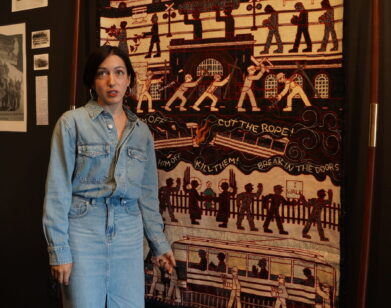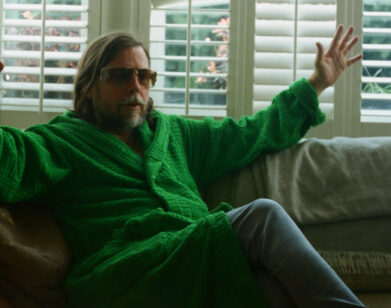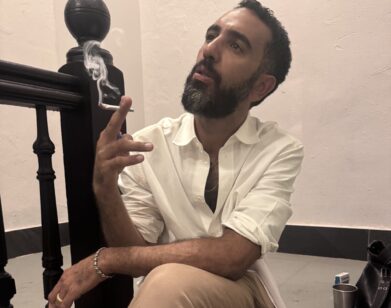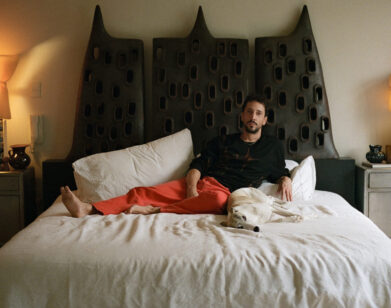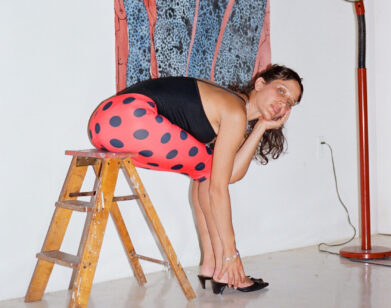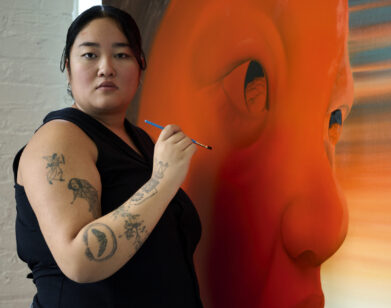Diane Brown’s RxArt: Putting Terry Richardson, Rob Pruitt, and Jeff Koons in the Hospital
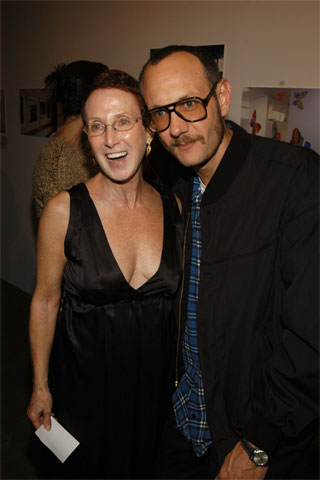
ROB PRUITT, SHY AND SAFE, LOOKING. COURTESY THE ARTIST AND RXART
Art is about context, and RxArt is an organization that’s taken up the heady task of installing sensitive, even rigorous art in hospital rooms. The installations are a welcome departure from examination room prints, an amusing learning experience, and an investment in life and goodwill.
After years running her eponymous gallery in Washington, D.C. and New York, consulting to private dealers and curating corporate collections, art world veteran Diane Brown founded RxArt in 2000. Since then, she’s made exciting, unpredictable choices with her artists—Jeff Koons to Terry Richardson, Rob Pruitt to Frank Stella, and William Wegman to Ryan McGinley—and produced the world’s first and best art coloring book. Run out of a narrow office in the Lower East Side that she shares with Bill Powers and the Half Gallery, the not-for-profit RxArt focuses on placing original, customized fine art in hospitals around the country.
We caught up with Brown to discuss the birth of RxArt, her medicinal beginnings, and why she can’t accept contributions.
ARIELLA GOGOL: You’re currently working with Rob Pruitt and Terry Richardson. In tandem or apart? What is the project?
DIANE BROWN: We’re doing a fantastic project, which is going to be installed on the November 9th, at Kings County Hospital, in the pediatric and adolescent psych units. Terry Richardson’s thumbs-up pictures have featured in places like Interview, so you’ll be familiar. This time he’s taken these thumbs-up pictures of children—and they’re very joyful. It entails images of kids reppresenting themselves affirmatively: “I’m okay, and you’re going to be okay too.”
GOGOL: How many hospitals have you equipped with installations, and what are your goals?
BROWN: We’ve been working with so many new hospitals—18, in fact. We’re very ambitious, and we’re 10 years old now. Certainly over the last few years, we’ve been moving a lot faster. It took two years to do the first project. Some years we’ll only get one project done, like the year we did the St. Jude project with Rob Pruitt and Will Cotton—it was a big project, took up all of our energy, and it took a lot of our resources to do the fundraising and to get that project done. So that was a long one.
GOGOL: Does the work stay in the hospital permanently?
BROWN: It stays in the hospital. We will take it out if the hospital wants us to, though. All of our contracts are different. They’re considered long-term loans—the hospital’s not in the business of taking care of art, but we are, so we maintain the work as well.
GOGOL: Are you at all involved with art therapy?
BROWN: We’re not art therapists, absolutely not, no. We’re both using artwork to help people heal, to take them someplace else; but we’re not hands-on, we’re just making it a better place to be visually.
GOGOL: How did you come to RxArt?
BROWN: I think anyone who’s visited a hospital has had this idea. “Man, could this look better.” If you make it warmer and more comfortable, it’s better for everybody. We had one couple who were donors in the bone marrow transplant unit at Mount Sinai. He had gone to the hospital, and had a successful bone marrow transplant at Mount Sinai. They had saved his life. And he wanted to do something for the doctors and the nurses. He said it was a unit with low morale on the staff, because they lose patients. His mentality was, if you have a beautiful, uplifting surrounding, everyone is better off.
GOGOL: Your education was as a pre-med student, correct?
BROWN: I was pre-med, but that was a long time ago. [LAUGHS] Emphasis on the “pre-!” But all I wanted to do when I was studying chemistry and biology in college was study art history. My parents just wouldn’t let me do it officially.
GOGOL: Are the artists you’re tapping friends of yours?
BROWN: I loved having a gallery, I was really proud of what I did, I had great artists. The fun of RxArt is I can work with any artist. The artists love working with us, I think. We do pay them. Many have declined to take remuneration, but not all artists are in the same position.
GOGOL: How high is the barrier to entry, in terms of the artists who can participate?
BROWN: Every project is specific. We commission art tailored to each project. We don’t accept contributions of art. We get a lot of people wanting—very well-intentioned—to donate art to us. But we don’t have the facilities to store it. We choose art specifically, for each unit.
GOGOL: How hard is it to get art into a hospital?
BROWN: In general, hospitals don’t have budgets for art. It depends on the hospital, but sometimes, I think, they’ll take whatever you offer them. We work with very specific art—we don’t want to just do something that’s expected. If you give somebody something that they’re a little unfamiliar with, then they’re really going to take the time to examine it. And that will take them out of the hospital in their minds—even if just for a minute.
GOGOL: Is all the money that funds the organization from donors?
BROWN: You know, every one of us is going to be in a hospital at some point—whether for ourselves or for someone we care about. No one’s exempt from this. So donors come from everywhere, not just the art world.
RXART’S ANNUAL BENEFIT AND AUCTION IS NOVEMBER 15.

